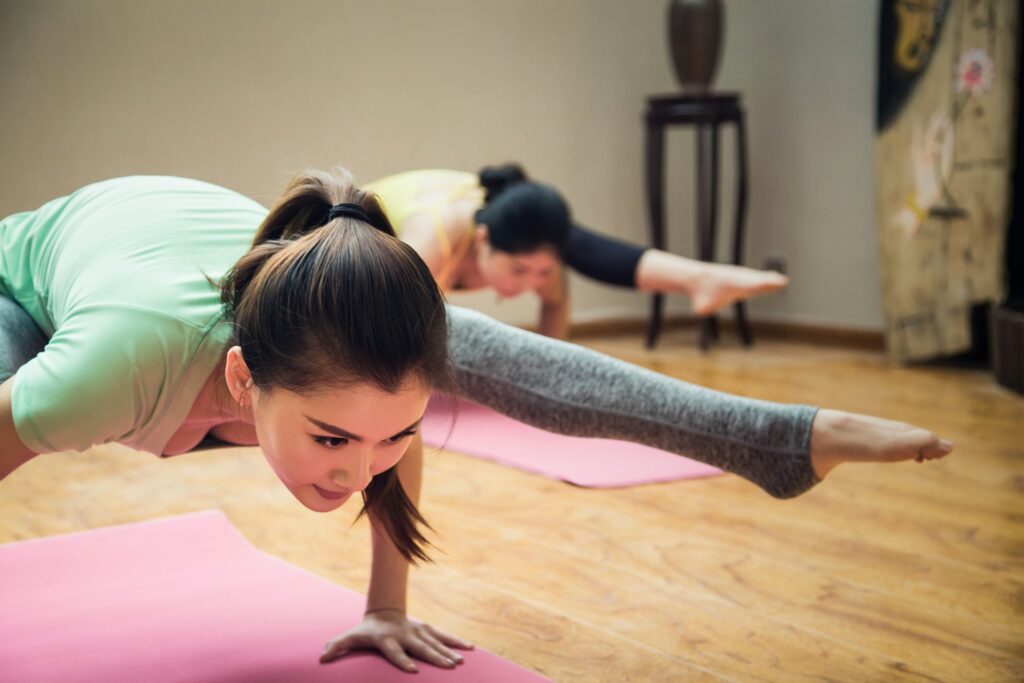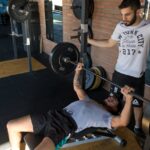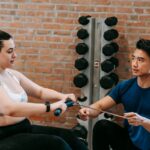In a world where we spend countless hours hunched over desks and glued to screens, our bodies are crying out for movement that actually matters. Enter functional fitness – the game-changing approach to exercise that’s revolutionizing how we think about strength, mobility, and overall health.
Unlike traditional gym workouts that isolate individual muscles, functional fitness trains your body to work as an integrated unit, preparing you for the movements you perform every single day. Whether you’re lifting groceries, playing with your kids, or simply getting out of bed, functional fitness ensures your body is ready for whatever life throws your way.
What Is Functional Fitness?
Functional fitness is a training methodology that focuses on exercises mimicking real-life movements and daily activities. Rather than working muscles in isolation, functional training emphasizes compound movements that engage multiple muscle groups simultaneously, just like your body naturally operates in everyday situations.
Think about the movements you perform throughout your day: squatting down to pick up objects, pushing doors open, pulling items off high shelves, rotating to look behind you, or carrying heavy bags. Functional fitness exercises replicate these exact movement patterns, training your muscles to work together efficiently and effectively.
The Science Behind Functional Movement
Research published in the Journal of Strength and Conditioning Research demonstrates that functional training improves not just strength, but also balance, coordination, and proprioception – your body’s ability to sense its position in space. This multi-dimensional approach to fitness creates a foundation of strength that translates directly to improved quality of life.
The key principle underlying functional fitness is specificity. By training movements rather than muscles, you develop strength that’s immediately applicable to your daily activities. This approach activates your kinetic chain – the interconnected system of muscles, joints, and nerves that work together to produce movement.
The Comprehensive Benefits of Functional Fitness
Enhanced Everyday Performance
Functional fitness transforms mundane daily tasks into effortless activities. When your training mirrors real-life movements, you develop the strength, stability, and coordination needed to perform these activities with greater ease and confidence.
Consider the simple act of carrying groceries. A functional fitness approach would incorporate farmer’s walks, unilateral carries, and rotational stability exercises that directly translate to this everyday task. The result? You’ll find yourself carrying heavier loads with better posture and less fatigue.
Injury Prevention and Rehabilitation
One of the most compelling benefits of functional fitness is its remarkable ability to prevent injuries. By strengthening movement patterns rather than isolated muscles, you create balanced strength throughout your body, reducing the risk of overuse injuries and muscle imbalances.
Functional exercises also improve joint stability and mobility simultaneously. This dual benefit is crucial for maintaining healthy joints throughout your lifetime. The multi-planar movements inherent in functional training ensure that your joints move through their full range of motion while under load, promoting both flexibility and strength.
Improved Balance and Coordination
As we age, balance and coordination naturally decline, increasing the risk of falls and injuries. Functional fitness directly addresses this concern by incorporating unstable surfaces, unilateral movements, and multi-directional exercises that challenge your proprioceptive system.
Research from the American Journal of Physical Medicine & Rehabilitation shows that functional training can improve balance by up to 30% in older adults, significantly reducing fall risk and improving confidence in daily activities.
Time Efficiency and Practical Results
In our busy lives, workout efficiency is paramount. Functional fitness delivers maximum results in minimum time by working multiple muscle groups simultaneously. A single functional exercise can target strength, cardiovascular fitness, balance, and coordination all at once.
This efficiency makes functional fitness particularly appealing for busy professionals, parents, and anyone looking to maximize their workout time while achieving practical, real-world results.
Customizable for All Fitness Levels
Perhaps the most beautiful aspect of functional fitness is its universal applicability. Whether you’re a complete beginner or an elite athlete, functional exercises can be scaled and modified to match your current fitness level and specific needs.
Essential Functional Fitness Exercises
Lower Body Functional Movements
Bodyweight Squats
The squat is the foundation of functional lower body strength. This movement pattern appears countless times throughout your day – sitting down, standing up, picking up objects from the floor.
- Stand with feet shoulder-width apart
- Lower your body as if sitting back into a chair
- Keep your chest up and knees tracking over your toes
- Descend until your thighs are parallel to the floor
- Drive through your heels to return to standing
Single-Leg Deadlifts
This exercise develops unilateral strength, balance, and posterior chain activation – crucial for walking, running, and navigating uneven surfaces.
- Stand on one leg with a slight bend in the knee
- Hinge at the hip, extending your free leg behind you
- Reach toward the ground while maintaining a straight back
- Return to standing by driving your hip forward
Lateral Lunges
Daily life requires movement in all directions, not just forward and backward. Lateral lunges prepare your body for side-to-side movements while improving hip mobility.
Upper Body Functional Patterns
Push-Up Variations
Push-ups develop pushing strength while engaging your core and improving shoulder stability. Progress from wall push-ups to standard push-ups to single-arm variations.
Rowing Movements
Whether using resistance bands, cables, or bodyweight, rowing exercises counteract the forward head posture common in our digital age while building pulling strength.
Overhead Carries
Carrying objects overhead challenges your core stability, shoulder strength, and coordination – perfect preparation for placing items on high shelves or overhead storage.
Core Integration Exercises
Planks and Variations
The plank family of exercises builds the core stability essential for all functional movements. Progress from standard planks to side planks, plank-to-push-ups, and dynamic plank variations.
Rotational Movements
Life happens in three dimensions, and your training should too. Wood chops, Russian twists, and rotational throws develop the rotational strength needed for sports and daily activities.
Programming Your Functional Fitness Journey
Beginner Programming Strategy
If you’re new to functional fitness, start with bodyweight exercises performed 2-3 times per week. Focus on mastering movement patterns before adding external resistance.
Week 1-2: Learn basic movement patterns
Week 3-4: Increase repetitions and hold times
Week 5-6: Add light resistance or progress to more challenging variations
Intermediate Progression
Once you’ve mastered basic movements, begin incorporating external resistance through kettlebells, dumbbells, or resistance bands. Aim for 3-4 training sessions per week with varied movement patterns.
Advanced Applications
Advanced practitioners can explore complex movement combinations, unstable surface training, and sport-specific functional patterns. Consider working with a qualified trainer to ensure proper progression and technique.
Measuring Progress in Functional Fitness
Unlike traditional strength training where progress is measured by the amount of weight lifted, functional fitness progress is multifaceted:
Performance Metrics
- Improved ease in daily activities
- Better balance and coordination
- Increased endurance for everyday tasks
- Enhanced movement quality and efficiency
Objective Measurements
- Functional Movement Screen (FMS) scores
- Balance assessments
- Flexibility and mobility tests
- Cardiovascular fitness improvements
Subjective Improvements
- Reduced pain and stiffness
- Increased confidence in movement
- Better sleep quality
- Enhanced overall well-being
Functional Fitness for Special Populations
Seniors and Aging Adults
Functional fitness is particularly beneficial for older adults, helping maintain independence and quality of life. Focus on balance, fall prevention, and activities of daily living.
Key exercises include:
- Sit-to-stand movements
- Step-ups and step-downs
- Balance challenges
- Gentle rotational movements
Athletes and Active Individuals
For athletes, functional fitness serves as the foundation for sport-specific performance. It develops the movement competency and injury resilience necessary for peak athletic performance.
Rehabilitation and Recovery
Physical therapists increasingly incorporate functional fitness principles into rehabilitation programs. The emphasis on movement patterns rather than isolated muscles accelerates recovery and reduces re-injury risk.
Common Mistakes to Avoid
Progressing Too Quickly
The most common error in functional fitness is advancing too rapidly through progressions. Master each movement pattern before adding complexity or resistance.
Neglecting Recovery
Functional training can be demanding on your nervous system. Ensure adequate rest between sessions and prioritize sleep and nutrition for optimal recovery.
Ignoring Individual Limitations
While functional fitness is adaptable, it’s crucial to work within your current capabilities and address any movement limitations or imbalances.
The Role of Nutrition in Functional Fitness
Proper nutrition supports your functional fitness goals by providing the energy needed for training and the nutrients required for recovery and adaptation.
Pre-Workout Nutrition
Consume easily digestible carbohydrates 30-60 minutes before training to fuel your workout.
Post-Workout Recovery
Within 30 minutes of training, consume a combination of protein and carbohydrates to support muscle recovery and glycogen replenishment.
Hydration
Maintain proper hydration throughout the day, as even mild dehydration can impair performance and recovery.
Getting Started: Your Functional Fitness Action Plan
Ready to transform your fitness routine and improve your quality of life? Here’s your step-by-step action plan:
- Assess Your Current Movement Quality: Consider working with a qualified trainer for a movement assessment
- Start Simple: Begin with basic bodyweight exercises 2-3 times per week
- Focus on Form: Master movement patterns before increasing intensity
- Progress Gradually: Add complexity and resistance as your competency improves
- Stay Consistent: Aim for regular, sustainable training sessions
- Listen to Your Body: Adjust intensity and volume based on how you feel
Frequently Asked Questions
Q: How often should I do functional fitness exercises?
A: Beginners should start with 2-3 sessions per week, allowing at least one day of rest between sessions. As you progress, you can increase to 4-5 sessions per week with varied intensities and movement patterns.
Q: Can I do functional fitness at home without equipment?
A: Absolutely! Many functional exercises use only bodyweight and can be performed in a small space. As you progress, simple equipment like resistance bands or kettlebells can add variety and challenge.
Q: Is functional fitness suitable for people with injuries?
A: Functional fitness principles are often used in rehabilitation settings. However, if you have existing injuries, consult with a healthcare provider or physical therapist before beginning any new exercise program.
Q: How long before I see results from functional fitness?
A: Many people notice improvements in daily activities within 2-4 weeks of consistent training. Strength and coordination improvements typically become apparent within 6-8 weeks.
Q: What’s the difference between functional fitness and traditional strength training?
A: Traditional strength training often isolates individual muscles, while functional fitness emphasizes compound movements that train multiple muscle groups to work together, mimicking real-life activities.
Conclusion: Embrace Movement That Matters
Functional fitness isn’t just another workout trend – it’s a return to the way our bodies were designed to move. By training movements instead of muscles, you develop strength that translates directly to improved quality of life, reduced injury risk, and enhanced performance in everything you do.
The beauty of functional fitness lies in its simplicity and applicability. You don’t need expensive equipment or complicated routines. You just need the commitment to move your body in ways that matter, preparing yourself for the demands of daily life while building a foundation of strength that will serve you for years to come.
Start your functional fitness journey today. Your future self – the one effortlessly carrying groceries, playing with grandchildren, and moving through life with confidence and vitality – will thank you for taking this important step toward better health and improved quality of life.
Remember, the best exercise program is the one you’ll actually do consistently. Functional fitness offers the perfect blend of practicality, efficiency, and results that make it sustainable for the long term. Begin with simple movements, focus on quality over quantity, and watch as your investment in functional fitness pays dividends in every aspect of your daily life.




Pingback: The Ultimate 30-Day Fitness Challenge for Men: Transform Your Body and Build Lasting Habits - wholesomefed